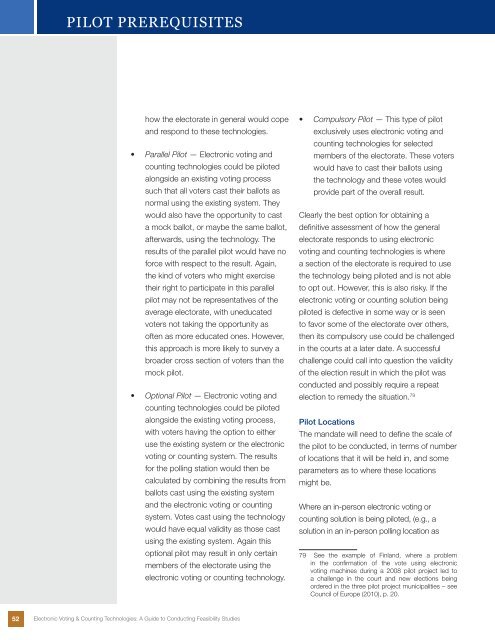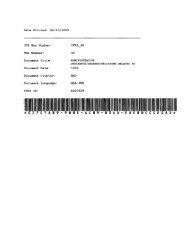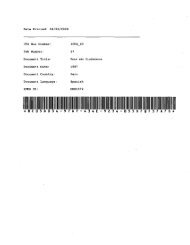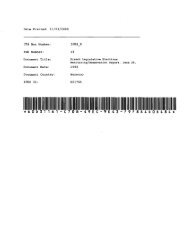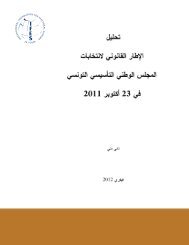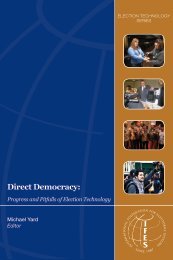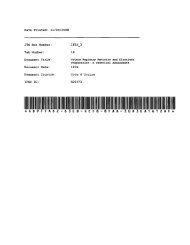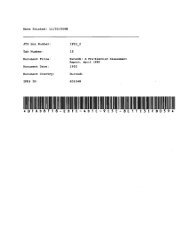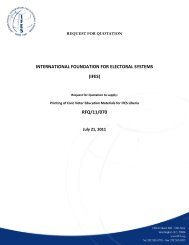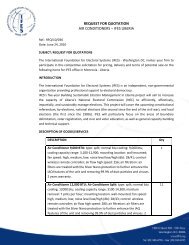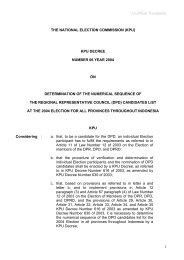Electronic Voting & Counting Technologies - IFES
Electronic Voting & Counting Technologies - IFES
Electronic Voting & Counting Technologies - IFES
- No tags were found...
Create successful ePaper yourself
Turn your PDF publications into a flip-book with our unique Google optimized e-Paper software.
INTERNATIONAL PILOT PREREQUISITESELECTORAL STANDARDShow the electorate in general would copeand respond to these technologies.• Parallel Pilot — <strong>Electronic</strong> voting andcounting technologies could be pilotedalongside an existing voting processsuch that all voters cast their ballots asnormal using the existing system. Theywould also have the opportunity to casta mock ballot, or maybe the same ballot,afterwards, using the technology. Theresults of the parallel pilot would have noforce with respect to the result. Again,the kind of voters who might exercisetheir right to participate in this parallelpilot may not be representatives of theaverage electorate, with uneducatedvoters not taking the opportunity asoften as more educated ones. However,this approach is more likely to survey abroader cross section of voters than themock pilot.• Optional Pilot — <strong>Electronic</strong> voting andcounting technologies could be pilotedalongside the existing voting process,with voters having the option to eitheruse the existing system or the electronicvoting or counting system. The resultsfor the polling station would then becalculated by combining the results fromballots cast using the existing systemand the electronic voting or countingsystem. Votes cast using the technologywould have equal validity as those castusing the existing system. Again thisoptional pilot may result in only certainmembers of the electorate using theelectronic voting or counting technology.• Compulsory Pilot — This type of pilotexclusively uses electronic voting andcounting technologies for selectedmembers of the electorate. These voterswould have to cast their ballots usingthe technology and these votes wouldprovide part of the overall result.Clearly the best option for obtaining adefinitive assessment of how the generalelectorate responds to using electronicvoting and counting technologies is wherea section of the electorate is required to usethe technology being piloted and is not ableto opt out. However, this is also risky. If theelectronic voting or counting solution beingpiloted is defective in some way or is seento favor some of the electorate over others,then its compulsory use could be challengedin the courts at a later date. A successfulchallenge could call into question the validityof the election result in which the pilot wasconducted and possibly require a repeatelection to remedy the situation. 79Pilot LocationsThe mandate will need to define the scale ofthe pilot to be conducted, in terms of numberof locations that it will be held in, and someparameters as to where these locationsmight be.Where an in-person electronic voting orcounting solution is being piloted, (e.g., asolution in an in-person polling location as79 See the example of Finland, where a problemin the confirmation of the vote using electronicvoting machines during a 2008 pilot project led toa challenge in the court and new elections beingordered in the three pilot project municipalities – seeCouncil of Europe (2010), p. 20.52<strong>Electronic</strong> <strong>Voting</strong> & <strong>Counting</strong> <strong>Technologies</strong>: A Guide to Conducting Feasibility Studies


